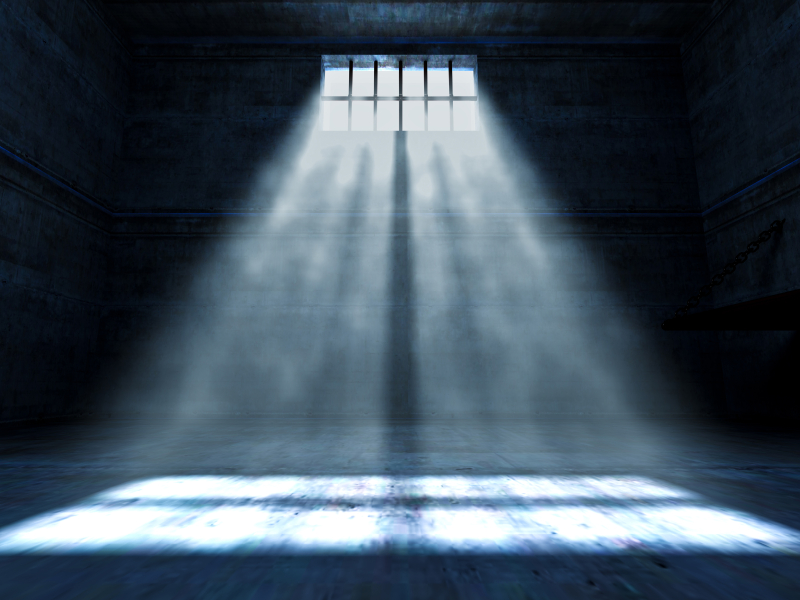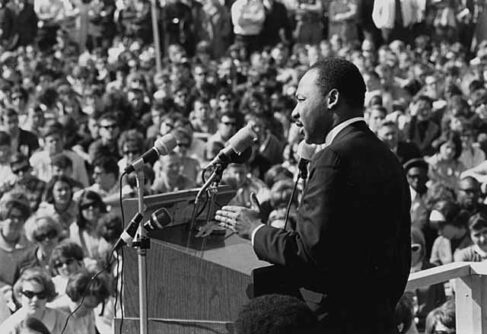I’ve taught in a number of unusual college settings, but surely the most unusual is Maryland’s only prison for women, where, in the fall 2010 semester, I taught the history and philosophy of science to two dozen incarcerated students. The college program at the women’s prison—and the parallel one at the nearby men’s prison—was the subject of a recent Washington Post article. In this remarkable program, incarcerated students are enrolled as Goucher College students—but rather than taking classes at Goucher’s stately north Baltimore campus, they meet in the grim setting of prison.
For the incarcerated students, their college classes are opportunities to rise above their grim surroundings by opening themselves to the enduring—and liberating—questions found in liberal arts studies.
In the course I led, we studied the development of astronomy by reading Ptolemy, Copernicus, and Kepler—not a textbook about these astronomers, but their own writings. We discussed Rømer’s 1676 calculation of the speed of light using observations of Jupiter’s moons, and then we observed for ourselves the moons of Jupiter through binoculars. As you can imagine, there are special arrangements for guards that must be made to take inmates out at night to make celestial observations, but our observations of Jupiter’s moons was the course highlight for many students.
I haven’t taught in the prison since 2010 and now serve on the board of a nonprofit that raises private funds to support the college program in the women’s prison. Private funds are critical, in a time when Pell grants are no longer available for incarcerated students and after state budget cut-backs.
As you can imagine, it’s not always easy to raise funds for inmates: many people, not without reason, judge that prison shouldn’t include the luxury of a college education that so many others are struggling to afford.
Just to mention one of the small challenges: most nonprofits strive to ensure a comfortable site visit for potential donors. When we plan site visits, we must begin by asking potential donors for their birthdates and social security numbers so that the state of Maryland can run a background check on them—a request that doesn’t always make for a warm start to a relationship with potential donors. And then, when visitors arrive at the prison, guards subject them to a patdown, which is an awkward start to any visit.
But the real challenge, I’ve found, in talking to potential donors, is navigating between two different kinds of arguments for enrolling incarcerated students.
One kind of argument focuses on the effects that follow from college education for incarcerated students, such as decreased recidivism (a valuable outcome when incarceration costs Maryland taxpayers an average of $38,000 per inmate annually). Other effects that move many potential donors are the benefits to the children of incarcerated mothers. Many women in prison are single mothers, who will be responsible for providing for their children upon release and whose college education will help to get a job. But the benefits to children start even before release, when children see their mother taking her studies seriously and engaged in a purposeful activity: one student in my astronomy class, for example, told me how terrific it was for her and her child, who was studying astronomy in school, to share their new knowledge of the heavens.
But the second kind of argument doesn’t focus on the after-effects of a college education but on the benefit of a liberal arts education in and for itself. This kind of argument follows from the view that the liberal arts are an inheritance that should available to all those—even inmates—who are ready for a transformative engagement with great thinkers and enduring questions—and this apart from any further benefit that flows to society, taxpayers, and incarcerated students’ children.
There are many practical issues for a college-in-prison program that turn on which of these two kinds of arguments most moves donors and program administrators. For example, if a chief benefit of college education for incarcerated students is held to be decreased recidivism, an applicant who is serving a life sentence will not be a priority candidate for admission, however able and motivated she is. On the other hand, if sharing the opportunity of the liberal arts is paramount, then applicants serving life sentences might be among top candidates for admission.
The women who make it into the college program at the women’s prison are, by and large, students who are truly ready to encounter the liberal arts. They have persisted through the college application process and gained the permission of the warden. When I taught in the college program at the women’s prison, I found that every student seemed to have the assigned readings complete; the students truly wanted to be ready for classroom discussion. The text that made the greatest impact on many students was Thomas Kuhn’s Structure of Scientific Revolutions—whose notion of “paradigm shift” made sense to the students not only in terms of science but in terms of their own lives.
Indeed, often the incarcerated students contrasted favorably with some of the students at the selective liberal arts colleges where I have taught. At highly selective liberal arts colleges, where tuition and fees run above $50,000 per year, quite a few students qualify for admission more by their parents’ ability to pay a huge tuition bill rather than by any sincere interest in their studies.
Conservatives are rethinking their approach to incarceration and tough-on-crime policies more generally; rethinking education in prion, including college education, has a place in that broader debate. The successes of the Goucher College program at Maryland’s prisons should encourage support for education, and specifically college education, in that conversation.






